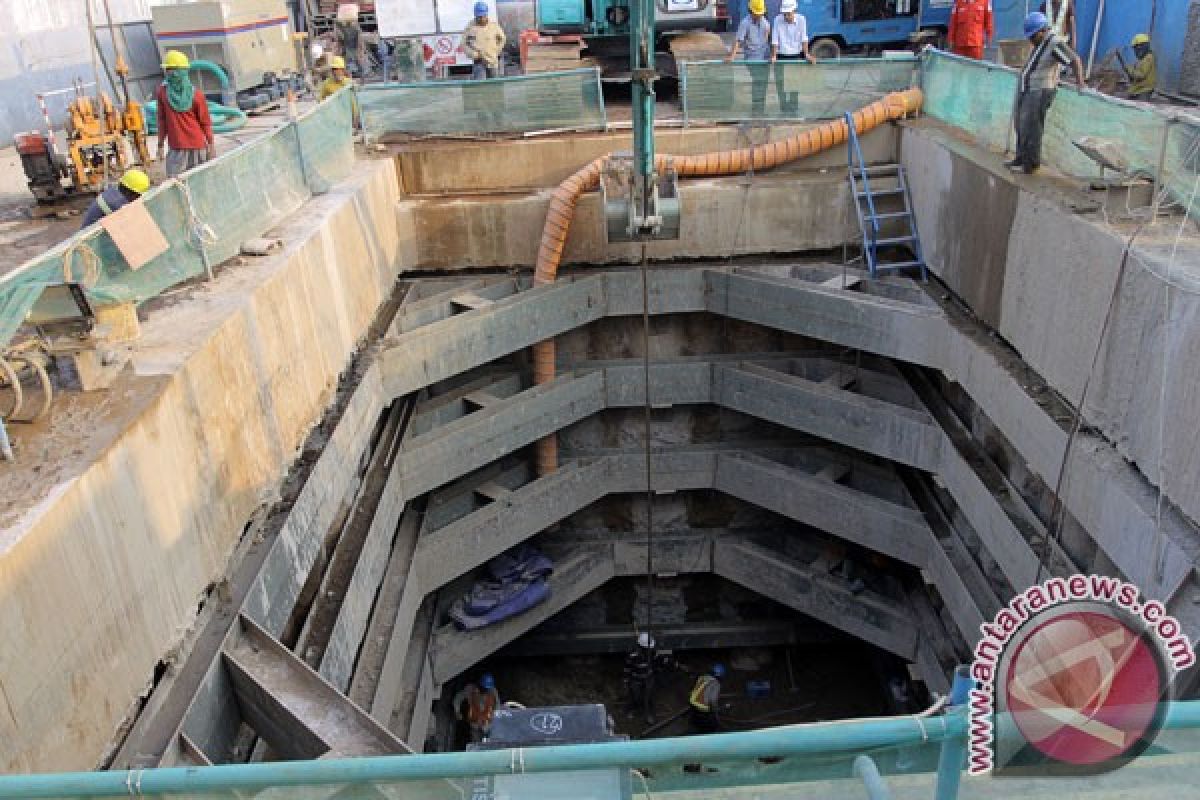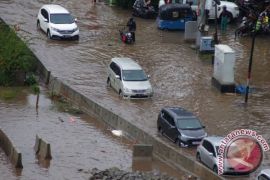In January 2014 alone, when the season reached its peak, floods claimed 23 lives, displaced tens of thousands of people and inflicted losses amounting to some one trillion rupiah in Jakarta.
Last year, Jakarta suffered material losses worth Rp20 trillion, or US$2 billion, as a result of floods.
Now, as the capital city is hit with the monsoons again, Kampung Pulo, East Jakarta, was reported to have been hit by floods over the last three days (November 11 to 14). Flood waters rose to heights between 30 centimeters and two meters.
However, the acting governor of Jakarta, Basuki Tjahaja Purnama, also known as Ahok, earlier said that the metropolitan was ready to face floods. He was optimistic that Jakarta would be flooded for no longer than one day.
"We are better prepared now as compared to previous years. I have ordered the head of sub-districts in Jakarta province to dredge the river basin (to ease the flow of water into the sea)," Ahok noted recently.
Jakartas Public Works Office has reinforced the existing dams and also installed several water pumps, particularly in areas like North Jakarta that are prone to be the first to be struck by the floods.
The city administration conducted a variety of efforts to address the issue, including normalization of rivers, reservoirs and waterways, as well as the demolition of illegal buildings located along the banks of rivers and reservoirs.
"Water pumps have been repaired and installed as a precaution against rising water levels that can cause flooding. The pumps can be operated optimally," he assured.
Ahok further explained that they faced challenges in relocating the people who lived in the illegally constructed houses along the river banks. The government is trying to relocate the people by building low-cost apartments across various areas in Jakarta, but the construction work has yet to be completed.
He added that there were a number of areas in Jakarta that were difficult to protect against flooding. "These include areas such as South Jakarta and North Jakarta. The two regions are still not properly protected because the river is yet to be normalized optimally. There are still illegal buildings along the banks," he noted.
Despite the challenges, he was optimistic that future flooding could be tackled properly.
"I believe that the Jakarta city administration can handle flooding properly. The management of flooding is much better. So the floodwaters that hit Jakarta will recede fast and will not stay for longer than one day," Ahok said on November 12.
In October, Ahok blamed corruption for the flooding that hits Jakarta almost annually.
Corruption is the root problem behind the fact that all the available facilities were not being utilized effectively, he said.
"There are a lot of smart people, and a lot of money to spend," he remarked.
When first I came to the city hall (as the vice governor), the city had Rp41 trillion. This year, Jakarta has nearly Rp80 trillion. I am very confident the root problem is corruption and nothing else," he affirmed.
If corruption is eradicated, all problems can be resolved easily, including the issue of how to cope with flooding, he added.
Ahok pointed out that he suspected the involvement of a lot of cheating in the process of handing over a project to contractors to tackle Jakartas flooding issues, with officials in charge of the project more interested in illegal commissions.
He believes that they may have to stop allocating the job of preventing floods to the private sector.
"With the money that we have, why should we not buy all the equipment we need and do the job ourselves?" he questioned.
To prevent flooding in the city, Ahok stated that he would focus on strengthening the existing dykes by buying equipment used in river dredging.
Furthermore, the Head of the Jakarta Disaster Mitigation Office (BPBD), Bambang Musyawardana, confirmed that better preparations are in place to tackle the floods that might hit the capital city during the rainy season.
"So far, we have carried out various measures to fight flooding, including structural and non-structural mitigation efforts among others," he said on November 12.
Structural mitigation preparations included construction of infrastructure needed to deal with flooding, such as river normalization, dams, pump installation, and absorption wells, he affirmed.
"Most of them are now under construction," he added.
While Jakarta could not complete all dam constructions this year, as they were being developed in stages for several years, 80 percent of pump installation works have been completed.
As part of non-structural mitigation preparations, the Jakarta BPBD has organized various trainings for the public in anticipation of floods, he stated.
The training workshops were attended by teachers, students and volunteers, he said.
Musyawardana earlier noted that a disaster warning system would be installed soon at five flood-prone urban villages to anticipate flooding during the rainy season.
He pointed out that the devices would be installed in Rawa Buaya, Kampung Melayu, Bidara Cina, Petogogan, and Ulujambi.
"Technically, the devices will be installed at 15 locations in each urban village," he stated, adding that the devices, equipped with sirens and loudspeakers, were a grant received from the Japan Radio Company.
"We received the devices from Japan. They will be installed as soon as possible," Musyawardana added.
Moreover, the National Search and Rescue Agency (Basarnas) is preparing a map of areas in Jakarta that are prone to floods during the rainy season.
Basarnas needs such a map for assigning tasks, supervision, and flood victim evacuation, agency spokesman M Yusuf Latif said on November 14.
Based on this map, Basarnas will provide material assistance, such as rubber boats, life vests, and helicopters, needed in case of flooding, he affirmed.
The agencys officials reminded residents of Jakarta, as well as those of other parts of the country that are prone to floods and landslides, to be even more alert now that the rainy season has begun.
Furthermore, the National Meteorological, Climatology and Geophysics Agency (BMKG) predicted that the season will be at its peak in December, January and February.
Indonesia began to experience its rainy season this November.
Floods were also reported in Aceh, West Sumatra, Bengkulu, Riau, and West Java.
In Silaut sub-district, South Pesisir district, West Sumatra province, one villager was killed and at least 841 houses were flooded on November 12, following the incessant rains that lashed the area.
In Aceh Darussalam province, seven districts were hit by floods. These included Aceh Besar, Aceh Jaya, West Aceh, Southwest Aceh, Nagan Raya, South Aceh, and Aceh Singkil.
(T.F001/KR-BSR/A014)
Reporter: Fardah
Editor: Priyambodo RH
Copyright © ANTARA 2014












